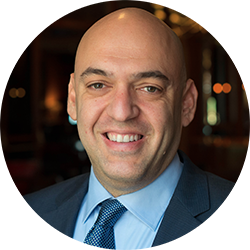Mortgage fraud is one of those terms that people use without fully understanding what it is. In the wake of the bursting of the housing bubble in 2008, the media started to focus on mortgages that ended up in foreclosure. In particular, we became much more aware of banking practices that included giving mortgages to people who had no or little demonstrated income.
As a criminal defense attorney in Los Angeles, I can tell you that mortgage fraud is something else entirely. While it remains to be seen whether anyone associated with major banking institutions will be criminally charged for their role in processing dubious mortgage applications, charges of mortgage fraud generally involve the applicant rather than the bank.
In California mortgage fraud cases involve a variety of related charges; mortgage fraud is more than one thing, and it almost always involves allegations that several laws were broken.
Yesterday’s arrest of nine people is a good example of how mortgage fraud cases are charged. The nine are accused of committing fraud in connection with the sale of six houses, and netting $2.4 million in the process. Here’s how their arrests were reported by the Los Angeles Times.
“The suspects are accused of obtaining titles to the residential properties, taking out loans in the names of straw buyers, and selling the homes at inflated prices, the Los Angeles County Sheriff’s Department said.
Two of the loans were in names of identity fraud victims, authorities said.
In allegedly carrying out the scheme, the suspects used false bank account and employment documents, according to authorities.”
The essence of mortgage fraud is an allegation that the accused lied on their mortgage application. The lie or misrepresentation has to be material, and can include withholding information from the bank or other institution that is reviewing the application. Because the lie is alleged to have been made for financial motives, and a way to obtain money, mortgage fraud cases almost always include grand theft charges (California Penal Code section 487a). This is punishable by a three-year sentence per violation.
There are common fact patterns in mortgage fraud cases, and the charges described above include two of them. One is that a straw buyer was used. When the bank is unlikely to accept the application of a buyer, oftentimes because of a bad or incomplete credit history, a different person (the straw man or woman) is named on the application.
This case also includes allegations that the purchase price of the house was inflated. This is where the straw (and potentially others) resell the property at successively higher prices.
In addition to grand theft, mortgage fraud cases can involve the following charges: identity theft, forgery, recording a false or fraudulent financial instrument, as well as notary fraud and escrow theft.
Given the number of people who were arrested, this case also involves conspiracy charges. It won’t be surprising, therefore, if prosecutors consider using the testimony of “smaller fish” in an effort to build a stronger case against the perceived leaders of the conspiracy.
This case is a good example of how mortgage fraud cases are much more complicated than they first appear.

